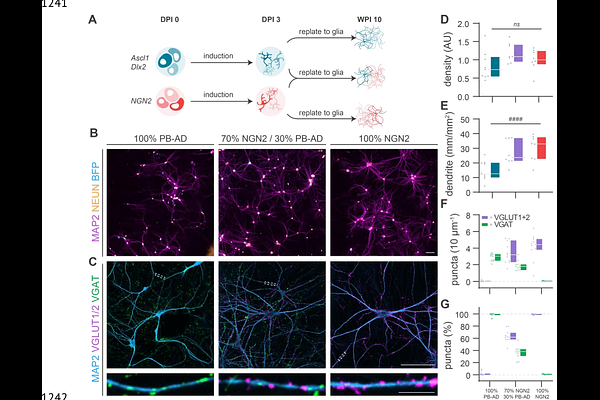One-step induction of human GABAergic neurons promotes presynaptic development & synapse maturation

One-step induction of human GABAergic neurons promotes presynaptic development & synapse maturation
van Voorst, T. W.; van boven, M. A.; Marinus, K. I.; Colon-Mercado, J. M.; Schretzmeir, J.; Haag, C.; Toonen, R. F.; Koopmans, F.; Ward, M.; Smit, A. B.; van Kesteren, R. E.; Verhage, M.; Cornelisse, L. N.
AbstractHuman induced pluripotent stem cells (iPSCs) present a powerful approach to study human brain physiology and disease, yet robust, pure GABAergic induction has remained difficult. Here we present improved, single-step, transposon-based GABAergic induction with Ascl1/Dlx2, which yields pure GABAergic neurons, in contrast to lentiviral approaches, and was tested across three independent iPSC lines. Proteomic and electrophysiological characterization at different developmental time points showed that these neurons gain a proteomic profile that maps to different cortical interneuron subtypes, particularly VIP+ interneurons, and display typical GABAergic synaptic properties, producing large, synchronous and picrotoxin-sensitive currents. During early development synaptic strength increased threefold, which was accompanied by enhanced expression of multiple GABA-specific presynaptic gene sets, but few changes in postsynaptic gene sets. Synaptic strength continued to improve during late development but with only minor proteomic changes. Co-seeding with NGN2 neurons created stable networks of predefined excitation/inhibition ratios, with corresponding synapse ratios. Taken together, transposon-based GABAergic induction yields pure, mature GABAergic neurons suitable for studying gene sets involved in synaptic maturation and to build excitation/inhibition networks for disease modelling.